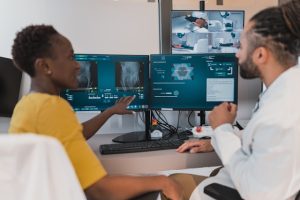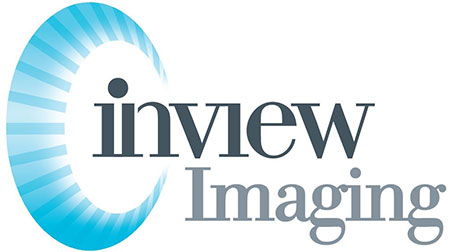Seeking a mammogram near me? In today’s fast-paced world, convenience is key. Finding a nearby facility for this crucial screening shouldn’t be a hassle. With the advancement of medical technology, access to 3d mammography for regular screening has become more accessible than ever before to diagnose breast cancer. Stay proactive about your health by locating a 3d mammography facility in your vicinity easily to diagnose breast cancer. By understanding the historical context of mammograms and their significance in early detection, you can take charge of your well-being efficiently. Don’t let distance or time constraints deter you from prioritizing your health. Discover the ease of finding a mammogram near me and take the first step towards preventive care today.
Key Takeaways

-
Regular mammogram screenings are crucial for early detection of breast cancer, increasing treatment success rates.
-
Understanding the mammogram procedure can alleviate anxiety and help you prepare both mentally and physically for the test.
-
Interpreting mammogram results requires guidance from a healthcare professional to understand any abnormalities or concerns.
-
Schedule your mammogram in advance to ensure timely screenings and follow-ups, enhancing your overall breast health.
-
Prepare for your appointment by following the specific guidelines provided, such as avoiding lotions or deodorants that can interfere with the test.
-
After your mammogram, stay informed about the next steps, such as additional tests or discussions with your doctor, based on the results obtained.
Importance of Mammogram Screenings
Who Should Get Screened
Women aged 40 to 49 should schedule a baseline mammogram to establish a starting point. Discuss screening frequency with your doctor based on individual risk factors. For women aged 50 to 74, aim for mammograms every one to two years.
Optimal Timing for Mammograms
Screening mammograms are crucial for preventive measures against breast cancer. Diagnostic mammograms are performed when patients show abnormal breast signs. It’s essential to understand the difference between these two types of mammograms.
Benefits of Early Detection
Early detection through mammograms significantly increases treatment options available. Mammograms can detect breast abnormalities before any symptoms manifest, allowing for timely intervention. Regular mammograms play a vital role in reducing mortality rates associated with breast cancer.
Understanding the Mammogram Procedure
Steps Involved
Mammograms take place in a specialized mammography suite, equipped with advanced mammogram technology. Patients are required to stand upright for about 10 minutes during the procedure, ensuring accurate imaging of the breast tissue. In some cases, healthcare providers may order breast ultrasounds following the mammogram to further investigate any abnormalities.
Preparing for Your Mammogram
Before your mammogram appointment, it is crucial to adhere to specific guidelines such as refraining from using deodorant, lotions, or powders on your underarms or breasts. Avoid wearing jewelry or accessories that could interfere with the imaging process. When preparing for a mammogram, it’s essential to understand that the procedure involves low-dose radiation, which is safe and necessary for detecting any potential issues. To ensure comfort during the mammogram, opt for loose and comfortable clothing that can be easily removed and put back on.
Risks and Safety
One key aspect to consider when undergoing a mammogram is the exposure to low-dose radiation. While this may raise concerns, it’s important to note that the benefits of early detection through mammograms significantly outweigh the minimal risks associated with radiation exposure. Radiology facilities follow stringent safety protocols to minimize any potential risks and ensure patient safety throughout the mammogram procedure.
Interpreting Results
Normal Results
Normal results from a mammogram provide reassurance about breast health. A BI-RADS score of 1 or 2 signifies normal findings, indicating no signs of abnormalities or cancer. It’s crucial to understand that normal results do not entirely rule out the possibility of future issues. Therefore, follow-up screenings are typically recommended to ensure ongoing monitoring and early detection if any changes occur.
Dealing with Abnormal Results
Abnormal results from a mammogram do not always mean a diagnosis of breast cancer. Instead, they indicate the presence of anomalies that require further investigation. In such cases, additional diagnostic tests are necessary to confirm the abnormalities detected in the initial screening. It’s essential to remain calm and seek guidance from healthcare providers for detailed information on the next steps and potential treatment options.
Additional Diagnostic Tests
When abnormal findings are detected, additional diagnostic tests play a critical role in providing a comprehensive evaluation. These tests may include a breast ultrasound and screening mammogram, which uses sound waves to create images of the breast tissue, aiding in further assessment. Genetic testing can also be beneficial in understanding the risk factors associated with certain genetic mutations that may contribute to breast cancer development. In some cases, healthcare providers may recommend advanced imaging techniques such as Breast MRI or PET/CT scans for a more detailed evaluation of any suspicious areas identified during the initial mammogram. Furthermore, a breast biopsy might be necessary to obtain tissue samples for a definitive diagnosis, allowing for appropriate treatment planning based on the pathology results.
Scheduling Your Mammogram
Finding a Location Near You
LabFinder simplifies the process by helping you locate in-network centers for routine mammograms. Easily find the nearest facility for screening or diagnostic mammograms. Access Telehealth services like MinuteMed for remote mammogram oversight.
Same-Day Appointments
e facilities prioritize urgent cases by offering same-day appointments. Check with the facility for availability of immediate mammogram appointments. Same-day appointments ensure timely evaluation of breast health concerns.
Without Insurance Options
Explore options for mammograms without insurance coverage. Some facilities offer discounted rates or payment plans for uninsured patients. Affordable mammogram options are available for those without insurance.
Preparing for Your Appointment
What to Bring
When heading to your exam, ensure you have your ID and insurance information on hand. It’s crucial to also bring any previous mammogram records for the doctor to compare. Jot down a list of questions or concerns to discuss with the healthcare provider.
What to Wear
For comfort during the procedure, opt for two-piece clothing. Avoid using deodorant, lotions, or powders on the day of your mammogram as they can interfere with the results. Choose garments that are easy to remove for the mammogram.
What to Expect
During the appointment, anticipate standing upright briefly as the patient undergoes the mammogram. The mammography technician will position your breasts accurately for imaging purposes. Prepare yourself for the compression of the breasts during this essential doctor-administered procedure.
After the Mammogram
Understanding Your Results
Results from a mammogram are typically classified using the BI-RADS scoring system, ranging from 0 to 6. Different scores signify varying levels of abnormality, helping healthcare providers determine the next steps for patients. It is crucial to understand that higher scores indicate a higher likelihood of breast cancer.
The BI-RADS categories include 0 (incomplete), 1 (negative), 2 (benign finding), 3 (probably benign), 4 (suspicious abnormality), 5 (highly suggestive of malignancy), and 6 (known biopsy-proven malignancy). Consulting with your healthcare provider is essential to accurately interpret your results and decide on the necessary actions based on the findings.
Next Steps for Abnormal Results
Upon receiving abnormal results from a mammogram, it is imperative to take immediate action. Follow up promptly with additional diagnostic tests such as ultrasound or MRI to further evaluate any suspicious areas detected during the mammogram. These tests provide more detailed information to aid in diagnosis and treatment planning.
Seeking guidance from radiologists and other healthcare providers is crucial for a comprehensive evaluation of abnormal mammogram results. Collaborate with your healthcare team to develop a tailored plan for managing any abnormalities identified during the screening process. This may involve additional imaging studies, biopsies, or consultations with specialists depending on the specific findings.
FAQs on Mammograms
Screening vs Diagnostic Mammograms
Screening mammograms aim to detect breast cancer in individuals without symptoms, typically starting at age 40. Diagnostic mammograms, however, are conducted when there are specific concerns like lumps or nipple discharge. Understanding this difference is crucial for appropriate healthcare decisions.
Can I Book Online
-
Easily schedule a mammogram online through LabFinder, ensuring a hassle-free process.
-
Access a network of facilities for convenient appointment booking, saving time and effort.
-
Utilize online platforms to streamline the process and book your mammogram efficiently.
Age Recommendations
Women aged 40 – 49 should consider a baseline mammogram at age 40 to establish a comparison point for future screenings. For women aged 50 – 74, regular mammograms are recommended to detect any abnormalities early. It’s essential to discuss personalized screening schedules with healthcare providers based on individual risk factors.
Resources and Support
Support for Abnormal Results
Loved ones can provide emotional support during the diagnostic process, offering comfort and reassurance. Joining support groups or attending counseling sessions can further aid in coping with abnormal mammogram results. Healthcare providers play a crucial role in guiding individuals through the emotional challenges associated with abnormal findings.
Educational Resources
Accessing educational materials on mammograms and breast health can enhance understanding of the screening process. Staying updated on the latest advancements in breast cancer screening ensures individuals are well-informed about available options. Online resources offer comprehensive information on mammography, empowering users to make informed decisions about their health.
Final Remarks
Ensuring regular mammogram screenings is crucial for your health. Understanding the procedure, interpreting results, and knowing what to expect before and after are key steps in this process. By scheduling your mammogram and being proactive about your breast health, you empower yourself with knowledge and early detection capabilities. Remember, your well-being comes first.
Stay informed, stay proactive, and take charge of your health. Don’t hesitate to reach out to resources or seek support when needed. Your commitment to regular screenings can make a significant difference in detecting any potential issues early on. Your health is worth prioritizing. Keep up the good work!
Frequently Asked Questions
Can a mammogram detect all breast cancers?
Mammograms can detect many types of breast cancer, but not all. Some cancers may not show up on a mammogram, especially in dense breast tissue. It’s essential to combine mammograms with regular breast self-exams and clinical exams for comprehensive screening.
How often should I get a mammogram?
The recommended frequency for mammograms varies based on age and risk factors. In general, women aged 40-54 should have annual mammograms, while those 55 and older can switch to biennial screenings. Consult your healthcare provider for personalized recommendations.
Are mammograms painful?
While discomfort during a mammogram is common due to breast compression, the procedure is quick and tolerable for most women. Inform the technologist if you experience excessive pain. Remember, the discomfort is temporary and crucial for early detection of breast cancer.
Can I wear deodorant or lotion before a mammogram?
Avoid using deodorant, lotion, or powder on your underarms or breasts on the day of your mammogram. These products can interfere with the imaging process and lead to inaccurate results. It’s best to follow the facility’s guidelines on what to avoid before the appointment.
What should I do if my mammogram shows an abnormality?
If your mammogram reveals an abnormality, don’t panic. Further diagnostic tests like additional imaging or a biopsy may be needed to determine if it’s cancerous. Follow up promptly with your healthcare provider to discuss the results and develop an appropriate care plan.
